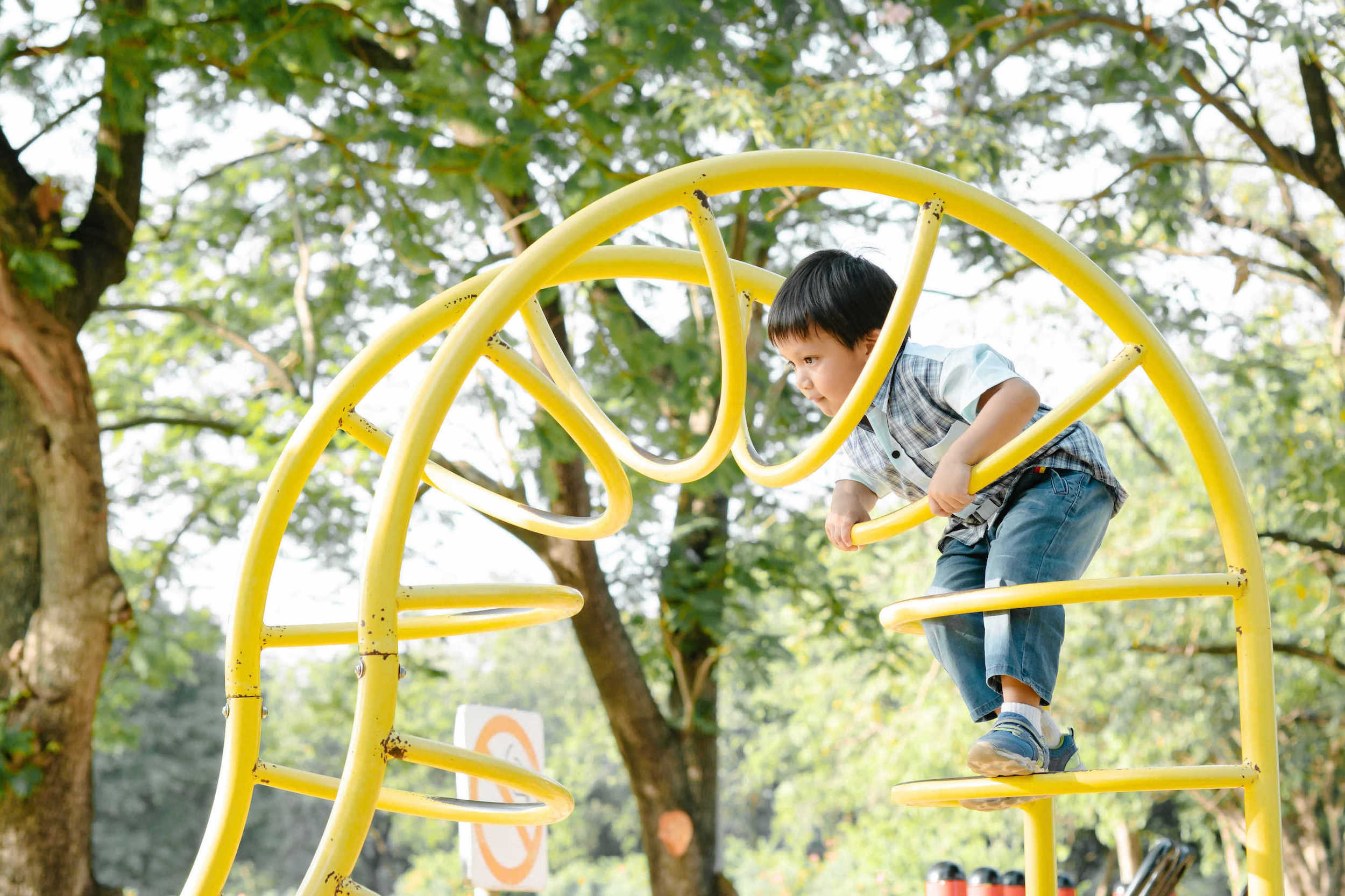Toddlers and Physical Activity – What You Need To Know

Toddlers are naturally active as they navigate the world around them. They need opportunities to develop their minds and bodies as they grow. Hence, regular physical activity is important and necessary for a toddler’s overall well-being. But just how much physical activity does a toddler need¹? Let’s find out.
This article was written in collaboration with Dr Moira Chia (Consultant, Department of Paediatrics, KK Women’s and Children’s Hospital).
How Much Physical Activity Does My Toddler Need in a Day?
The recommended amount of physical activity varies with age and can be spread out over the course of the day². The Singapore Physical Activity Guidelines recommends that:
- Children between 1 to 6 years old require minimum 180 minutes doing a variety of physical activity of any intensity spread throughout the day. For those aged 3 to 6 years old, at least 60 minutes should be moderate to vigorous physical activity.
Some examples of moderate to vigorous physical activity include games at the playground (e.g. hide and seek, tag/catching, climbing, hopping, rope-skipping, and casual ball games). The list for fun is endless!
Benefits of Physical Activity for Your Toddler
| Maintaining a Healthy Weight Since Early Childhood | Regular physical activity has been linked to a healthy weight, with carry-over effects into adulthood. |
| Cultivate Good Habits Early Which Can Be Built Up And Sustained In Adulthood | Good physical activity habits established during childhood are likely to be carried through into adolescence. |
| Improve Musculoskeletal Development | Moderate-intensity physical activity has been proven to improve bone mineral density and muscular development and promotes the development of motor skills. |
What Type Of Physical Activity Should Your Toddler Be Getting?
As toddlers are learning new mobility skills every day, try introducing activities that are appropriate for their age. It’s best to try a variety of activities that include both indoor and outdoor, structured and unstructured play options.
There are many different types of physical activity, sports and games which you can introduce to your toddler. Physical activities can be done indoors or outdoors. Allow your toddler to decide on where and what to play.
For example, when indoors, setting up a safe zone for movement in an area of the house can mark the beginnings of a toddler’s independent exploration where he/she can decide on where or how to play without any instructions.
You can also pick out a favourite song and dance to the music or make a game of keeping a balloon up in the air by hitting it on various parts of the body. Learn new skills and play with items found around the house. Use cushions for a safe game of catch at home or create a hopscotch pattern with a masking tape across the floor. Stimulate their imagination by creating an obstacle course with household objects. Engage their motor skills with interactive games like hide and seek or treasure hunt. Encourage regular movement such as jumping, running, leaping while engaging them in fun, imaginative play.
Alternatively, if the weather permits, step out and let your toddler explore the world around you. Make routine visits to outdoor³ spaces such as a park or playground. Let your toddler walk on the grass, step on leaves, and run around uninhibited. Balance on a log or go down a slide, let them explore various activities⁴ to strengthen their muscles and improve their motor skills.
Try something new with family events or workshops that can be great fun for all. As toddlers start to gain a wider range of motion, let them expend their energy and practice fundamental movement skills by dribbling a ball, playing a game of catch with others, or riding a tricycle. The level of intensity is not important but remember, more is always better at this age.
How Should Your Toddler Divide Up His/Her Day?
Finding time for physical activities amidst a busy day needs pre-planning. Consider having a routine for you and your toddler to aid the process. For example, having 30 minutes of playground time after dinner every day.
If your schedule is packed, try involving your toddler into your routine instead. Incorporate physical activity into your daily life by walking with your toddler instead of taking the bus, or taking the stairs instead of the lift.
Time set aside for physical activities is a time for fun and bonding and an investment in you and your child’s future health. As physical activity is encouraged, sedentary screen time should be limited to less than an hour a day¹.
Source: Health Promotion Board
The article has been endorsed by various representatives from both public and private healthcare institutions including Ms Adeline Kooh Seok Koon (Asst Director, Nursing (Maternity), Mount Alvernia Hospital).
Visit Health Promotion Board’s Parent Hub, for more useful tips and guides to give your baby a healthy start.



